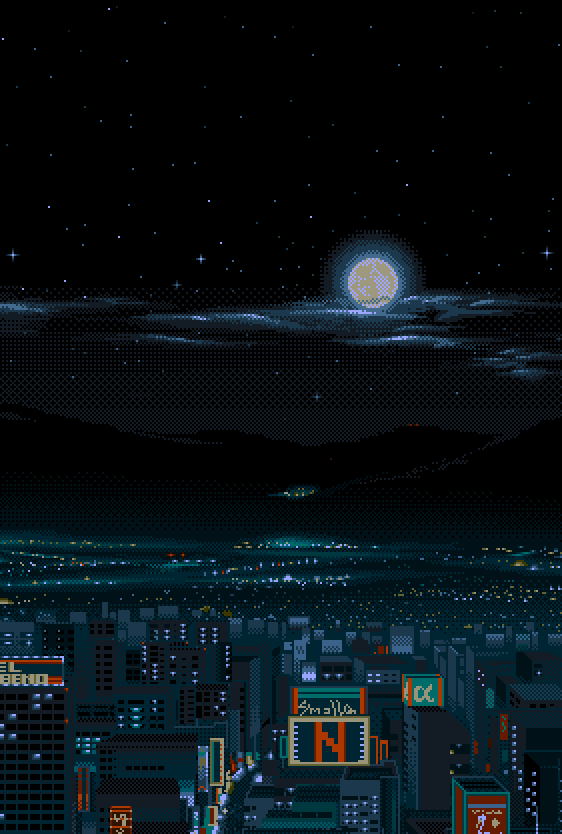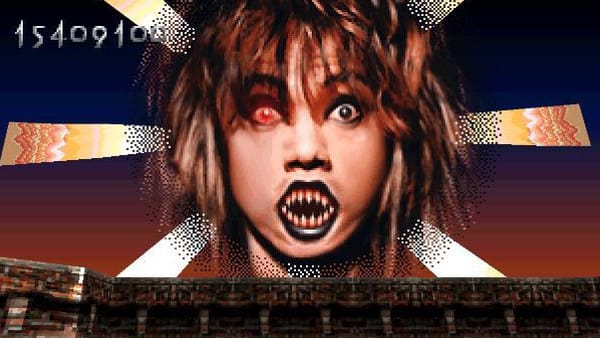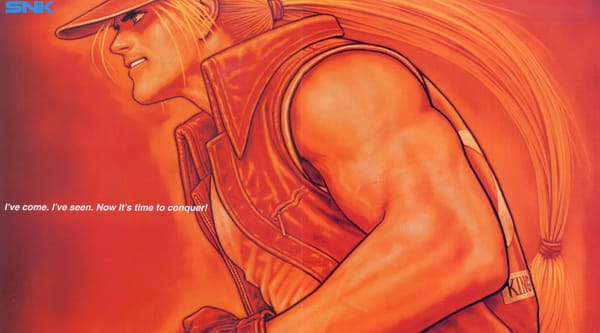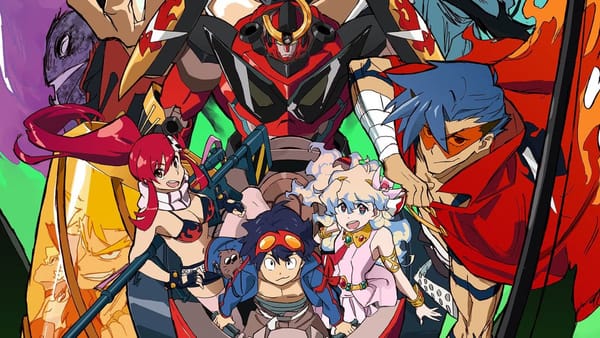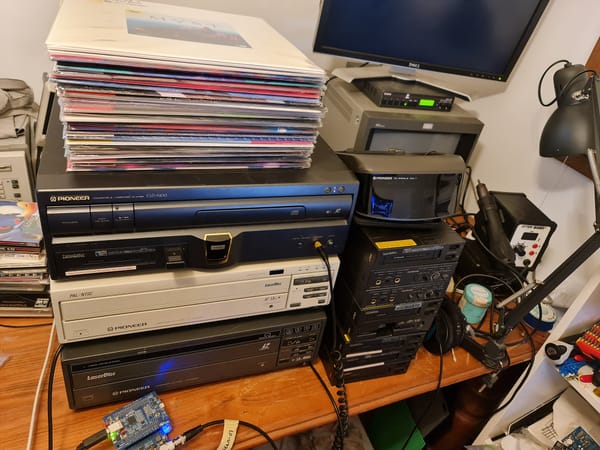The first 2 days: Emudom overdrive
Come for the Zelda deets, stay for quotes on SuperFX fastrom and the 20-year wait for a fully translated Dreamcast great.
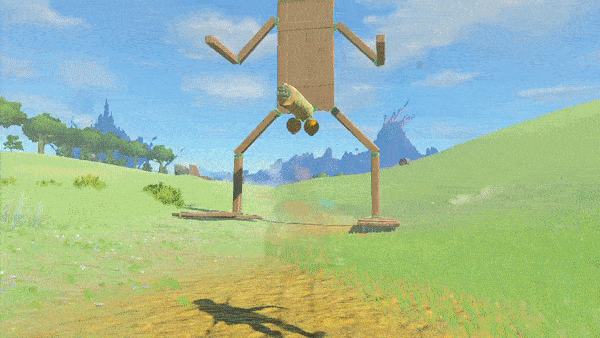
As I write this, an unopened copy of Tears of the Kingdom sits on my desk like a grenade I haven’t yet ripped the pin on. When I do I’ll knowingly be turning my free time into so much shrapnel, and it’s already ironically mostly been spent poring over threads and Discord servers about Tears of the Kingdom the last few days. Since my most recent Read Only Memo, the game leaked, was pirated like mad, emulated, modded, used as an excuse for Nintendo to go after an important Switch homebrew tool, released, reviewed, properly emulated, and modded some more. So yeah: busy couple weeks.
I went through the custom firmware process with my Switch a few weeks back in anticipation of this moment, though I haven’t yet fully committed to playing Tears of the Kingdom on my PC via emulation, or overclocking my Switch a bit to help the poor old handheld keep its framerate up. Given how promising the emulation looks so far, it feels like the right way to go even for a first playthrough — but maybe I’ll give it a few weeks, let some of the kinks work out.
When I work up the courage to open it, anyway. I honestly feel a sense of trepidation about playing Tears of the Kingdom that I didn’t fully understand until I had it in my hands. In 2017, I came home from work every day and played Breath of the Wild on the Wii U for like four hours straight for a solid month. It wasn’t just that I loved it. I had been so skeptical of Nintendo’s ability to make the game that it did, to embrace that kind of systemic design, that I was just enraptured. I bitterly disliked much of Skyward Sword a few years earlier — it felt like they’d already beaten that formula into the ground, and then reanimated its corpse to get just a little more mileage out of it. It was worse than bad. It was boring. With that sour taste left in my mouth, Breath of the Wild didn’t just make me love Zelda in a way I didn’t expect to again — it made me feel a certain kind of way while playing a videogame that I genuinely did not think I would ever feel again. That I didn’t think I could feel again.
Pretty surreal to realize that exact harmonious frequency of joy and wonder still existed inside my soul, but nothing had managed to tune into it for at least a decade.
So, tough act to follow. After living through emotional equivalent of dancing on the piano, I’m scared Tears of the Kingdom won’t hit the same, even if it’s a better game. So I’m putting off playing it, because best case I’ll say to hell with everything else, I just play Zelda now, and worst case I’ll try to attune myself to that frequency again and just find static.
Anyway, welcome to Read Only Memo, a newsletter about… people doing cool things with computers? Definitely not existential angst! Ha ha.
Tears of the Kingdom is most definitely the story of the moment, both in emulation and outside it, so I opted to make it both of the Big Stories this week, with a couple different angles. If you’re happily playing it on your Switch or don’t give a Kaepora Gaebora hoot, well, skip on down to the rest of the newsletter, which is mostly about things other than Zelda. And perhaps I can interest you in this photo of me playing Tetris DX at a college graduation in sweltering Los Angeles last weekend?
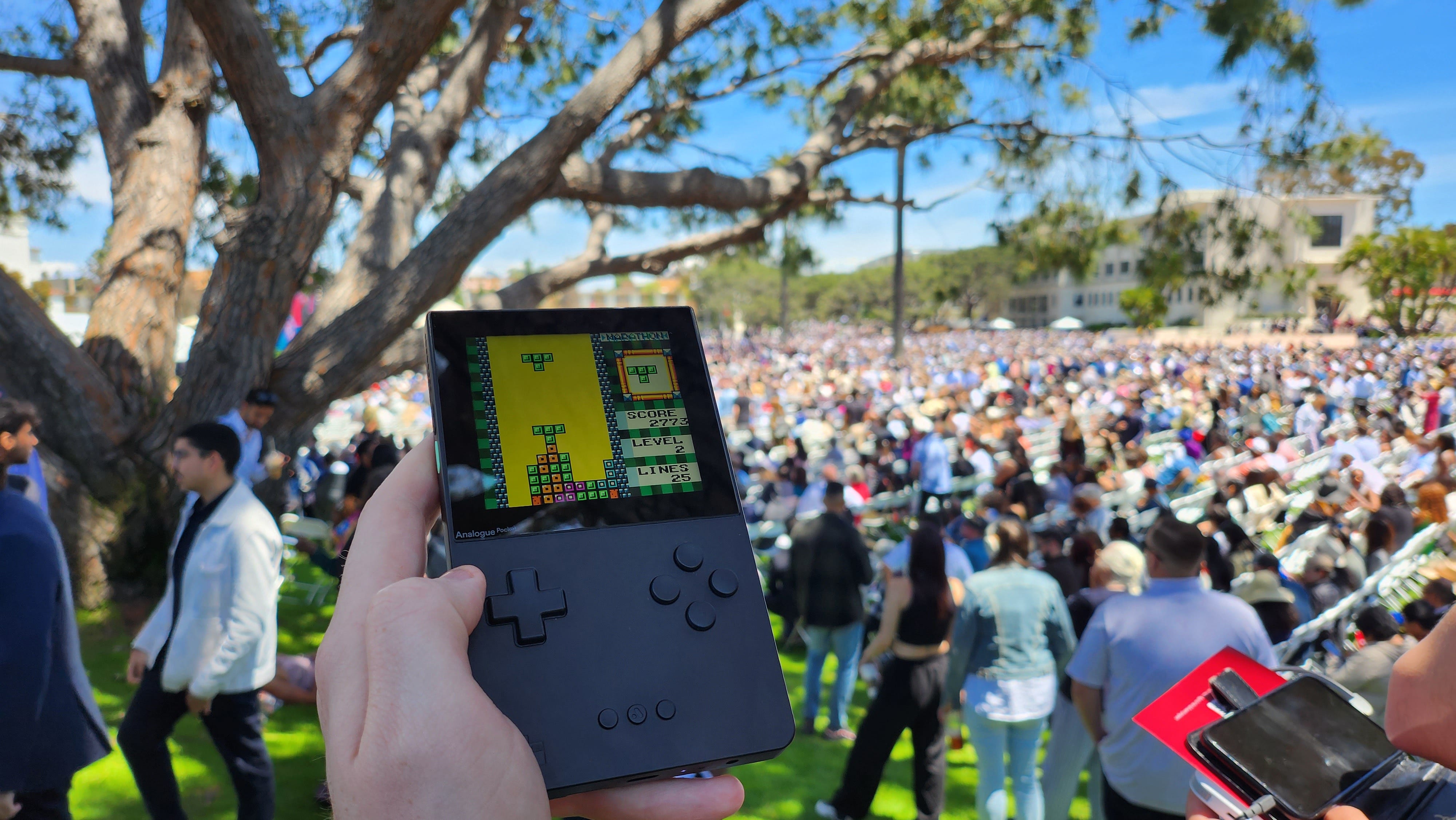
I gotta say, if you haven’t seen the Analogue Pocket in person — the screen on this thing is Scanners-head-explodingly-good. Cranked to max it was bright enough for me to play, with sunglasses on, in the kind of sunlight that had me slathering myself with sunscreen every 45 minutes. Nothing embodies the spirit of emulation more than using the pinnacle of 2020s technology to play 1990s games. Hell yeah.
Aight, Zelda time.
The Big Two
1. Tears of the Emudom

Tears of the Kingdom brings with it the kind of intense scrutiny that emulators probably only get once in a generation, and only then if they’re relatively in-line with current hardware. This is at least the third time a Zelda game has been this kind of flashpoint: it happened with UltraHLE and Ocarina of Time in ‘99, and Breath of the Wild and Cemu a few years ago.
Nothing happened to Cemu despite two elements adding fuel to the “Nintendo hates emulation” conflagration: the emulator was closed source at the time, and pulling in $40k per month on Patreon at its peak. No lawsuit, no DMCA. Just like Tears of the Kingdom, Breath of the Wild leaked out early. But the anticipation for this game feels like it’s on another level, and the water was near-boiling already, primed by Nintendo’s action against YouTuber and Zelda mod-funder PointCrow (more in this ROM).
As TotK started flooding piracy sites, Nintendo — or possibly someone masquerading as Nintendo — filed a DMCA takedown with Github over Lockpick_RCM, the tool used to dump the Switch encryption keys needed to play games on emulators Yuzu and Ryujinx. It’s still offline. Now, backups still exist all over the web — there’s no real danger of this tool disappearing forever. But the scarier possibility here is the chilling effect this move could have on future efforts to circumvent DRM.
Based on my IANAL understanding of the DMCA, as well as my research into Europe’s equivalent, I believe there’s a good chance that a tool like Lockpick_RCM would be considered copyright infringing. The DMCA in particular has a pretty narrow set of exemptions that allow you to bypass encryption, and my reading is Lockpick would not qualify. That’s the DMCA for you: a shitty law that by and large prioritizes the crocodile tears of multibillion dollar companies over an individual’s right to, say, hack the tablet-with-little-controllers they bought to run different software on it. God forbid they make it run Bubsy or something.
The irony here is that the vast majority of people bothering to run a tool like Lockpick_RCM are doing so because they’re actually buying games from Nintendo and want to play them on PC. It’s a lot more effort than just torrenting the game and finding the decryption keys someone put in a skeezy piracy tutorial on YouTube.
The DMCA is such a busted apparatus of the law that I honestly hope Lockpick_RCM’s author contests the takedown notice and puts the tool back up. Despite my worry over the letter of the law, it would ultimately take a court case to prove whether the tool is infringing or not, and Nintendo almost certainly does not want to go to litigation. Even if there’s only a 10% chance it loses, that loss could set a precedent that allows for hackers to go buck wild on its next console. The stakes are too high. The best thing for the little guy to do in this situation is just not back down after the first couple threats, scary as they are. At times like these I can only recommend the wisdom of The Lost Trailers: Well, there ain’t no chainsaw-bearing clown, so what do I got to fear?
2. The first 48 hours
I spent late Thursday, post-release, and most of Friday checking in with the Switch emulator developers and looking into the mods to get the clearest sense possible of where Tears of the Kingdom was at going into the weekend. The shortest version is: the emulator devs fixed the few most notable issues within a few hours of legal availability, and you can play the game really well on an emulator right now.
The slightly longer version:
- Ryujinx’s devs patched some crashes, artifacting, and visual glitches on Thursday and Friday; on Saturday they improved ToTK performance under Vulkan with Nvidia GPUs
- Yuzu put out a simple fix for an issue that was causing the game to fail to boot, then fixed graphical issues on Friday and Saturday. Another Saturday update “Eliminated a massive log spam that was causing performance dips in Zelda TotK while in the depths.” Looking at player feedback, it sounds like there are still parts of the game that cause particular performance problems, so I expect more targeted updates to come.
There are certainly compromises, but it doesn’t take much to get the game running at a strong 30 fps right now, and at much higher resolution than the Switch. There’ll be shader stutter, but every freakin’ PC game has that, anyway, so ¯\_(ツ)_/¯
I may be being a bit puritanical here, but as I also wrote on Friday, I’m not on board with the existing 60 fps and dynamic framerate mods that are being passed around right now. The mods themselves are fine — they’re just tiny text files with a few lines of code to muck with the game’s memory and tell it to run at a different speed. But the mods were uploaded by folks who’ve been tinkering with Tears of the Kingdom for the last two weeks, because they pirated it. It's just kinda shitty? All they had to do was wait a couple weeks. Emulator devs have to bend over backwards to avoid any association with pirated stuff, and these mods being in high demand makes that harder.
Other modders just started on Friday, so it’ll take some time for their work to bear out. Personally, I’m waiting to see what longtime Switch modder theboy181 accomplishes; he’s already working on a 60 fps mod that will, I hope, avoid a strange quirk of the existing mod, which turns the screen black when you swap weapons. You can join his Discord to follow progress.
At the rate things are moving, I expect the changes in TotK emulation between now and the next Read Only Memory to make it feel like six months have gone by. It’s gonna be another intense two weeks.
Patching In

Analogue Pocket gets prettier - Analogue patched the Pocket’s firmware to 1.1 — it’s a pretty minor update for a full year and a half after launch, but welcome nonetheless. Most significantly it tweaks the display modes for the various Game Boys to more closely mirror the original screens, but unfortunately these display modes still aren’t available when using the openFPGA cores. Here’s a helpful comparison.
Speed of the Wild - Yuzu’s latest progress report details a slew of impressive performance improvements; whom among us doesn’t love it when numbers go up?
Most significantly, a rework of the buffer cache system means quite a few games that could previously only work on the “high” GPU accuracy setting (slow) now work fine on the “normal” GPU accuracy setting (faster). They’re claiming an average 50% performance boost across the board. 🚀
There are some BOTW-specific fixes in here too, like clearing up some graphical anomalies on AMD/Intel GPUs. It’s almost beautiful enough to bring Tears to my eyes…
Core Report

SuperFX + Fastrom = Superrom? - As mentioned in an earlier newsletter, hacker kandowontu has been on a recent tear converting SNES games from slowrom to fastrom (tl;dr, in some games this can majorly alleviate slowdown). Most of these romhacks are tested and working on the MiSTer too, but two were proving problematic: Yoshi’s Island and Star Fox. A new update for the unstable MiSTer SNES core adds a fastrom toggle that fixes things. I asked kandowontu for a bit more detail on why it now works:
“What I’m assuming was done was to allow the GSU to read from banks $80+.
By default, games run in banks 00-$3F (hex). Fastrom requires the game to run fully in banks $80-$BF or $c0+. For fastrom games, banks $80-$BF are actually mirrors of banks $00-$3F. They contain the same data. So what I do is run through the game with bsnes and diztinguish, and that logs all data executed as actual valid opcodes. When I’m done, I can export it. I then change the ORG headers which tells the game that each bank starts at $80+… Then it’s pretty simple to tell the game to turn fastrom on and jump into the fastrom banks.”
On the MiSTer, you’ll have to be on the unstable SNES core and enable GSU fastrom to make Yoshi’s Island/Star Fox behave. Check out kandowontu’s fastrom spreadsheet to see all the converted games so far, including compatibility notes for both the MiSTer and Nintendo’s SNES Classic emulator Canoe!
P-SVideo-X - These days a lot of us retro snobs are all about our RGB SCART cables running out of modded consoles into high-end CRTs or scaler boxes (shout out to Mike Chi’s amazing RetroTink 5X!), but that ain’t everyone’s bag. Some people are just like, yes, give me that shitty, blurry mess of colors I remember from my childhood. And who am I to tell them they’re wrong?
Okay, I’m honestly being mean here: S-Video can look great, especially on a quality CRT, and composite has its aesthetic place too. So I get the excitement in now being able to hook a MiSTer up to a TV via S-Video and play PS1 games, thanks to the work of Mike Simone.
Translation Station

Rent-a-Hero No. 1, but Dreamier - This Dreamcast game from Sega (produced by Yu Suzuki!) has one hell of a tangled history. A Genesis remake, it was never localized into English until an Xbox port in 2003… which then wasn’t actually released outside Japan. But Rent-a-Hero has been playable in English for years, because that Xbox version leaked and is available on Hidden Palace. It wasn’t quite finished, however, inspiring a hacking team to backport that translation to the Dreamcast version, including tackling “thousands of untranslated lines” from the Xbox prototype.
But there’s way more going on here than slapping that text onto a GD-ROM and calling it a day. “Solving the technical difference between formats exposed the massive amount of untranslated lines, dozens of 3D models and hundreds of textures,” mod team leader VincentNL told me. VincentNL passed on some more details on the translation process from contributor Togepichu:
Keeping the charm of both a combination of the JP original and the Xbox prototype was actually a challenge and easily goes unnoticed to those unfamiliar with the original. A large number of lines needed to be translated and adapted to seamlessly fit the current tone. At the same time a consistent number of typos (1000+), line breaks or simply wrong text had to be carefully rewritten back from Japanese translation.
A fun translation example:
"Popcorn being a dog's favourite snack..."
This line is a clear hint on what to do in the Japanese version, but not in the English version, causing needless guessing and lucky backtracking decisions.
VincentNL and co. gave me so much more detail about the translation project that I’m thinking about bundling it up as a bonus newsletter. I haven’t played Rent-a-Hero, but it strikes me as a quintessential early aughts Japanese game; the quirky tone, the dense, pre-open-world explorable city full of chonky 3D buildings and people. Basically, everything the Yakuza series has kept alive. Anyway, highly recommend ThorHighHeels’ video on Japan-only Xbox games that includes a section on Rent-a-Hero.
Good pixels

Currently coveting Devils Blush Volume 1, a zine/book (110 pages!) comprised of cruuuunchy screenshots of pixel art games and especially early 3D. I’m legally required to love this aesthetic because I am 35 years old. Hit the link to order a copy.
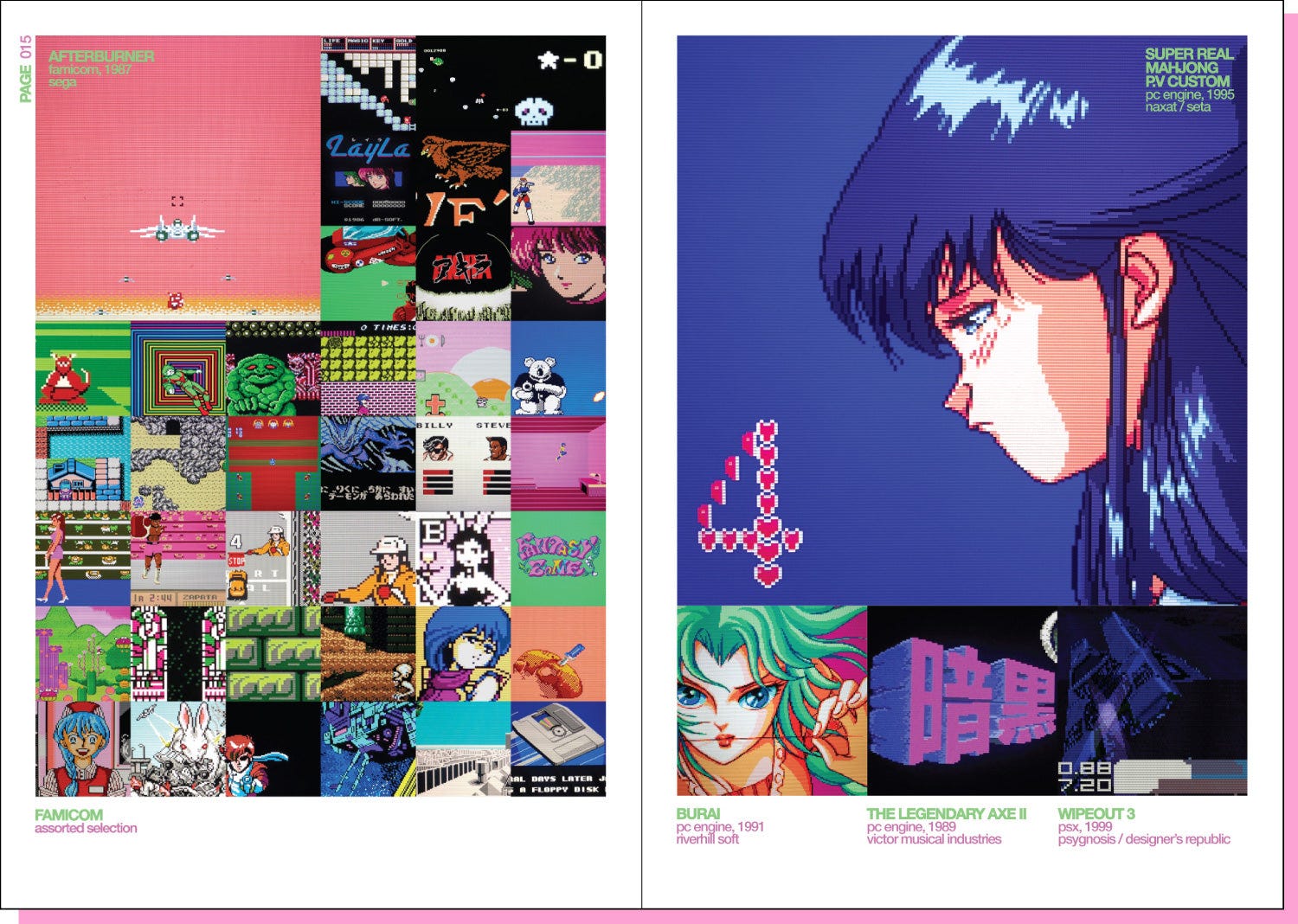
Looks like there’s already an ultrawide mod for Tears of the Kingdom in testing. UI’s stretched, though. Mild spoilers within.
Sleep well.
